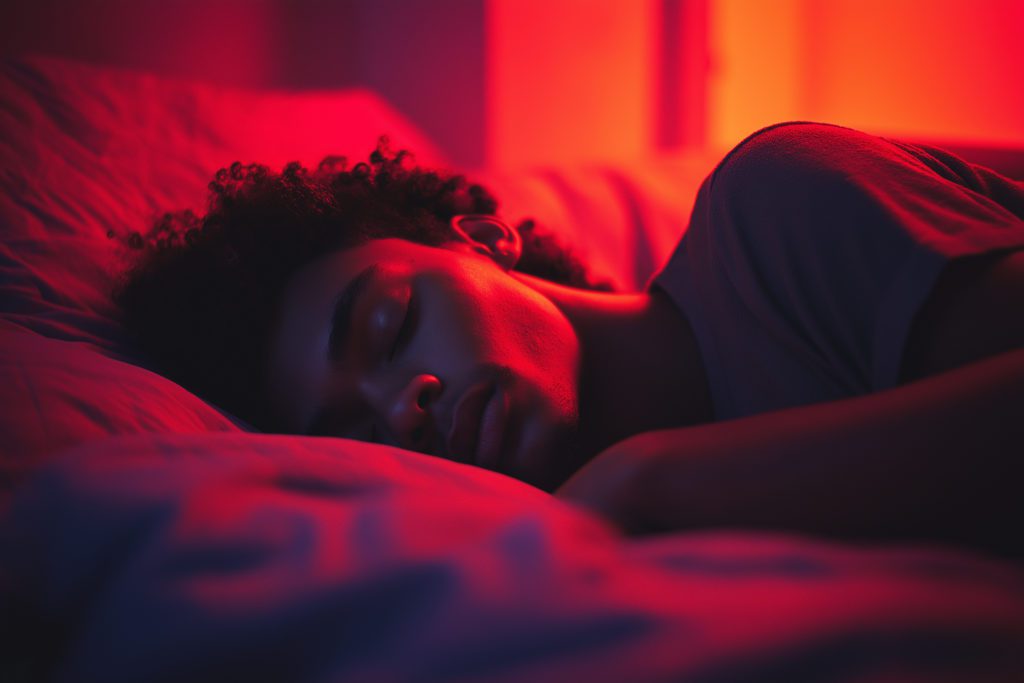
The Impact of Daylight Saving Time on Sleep: Adjusting to Time Changes and Light Shifts
Ready for daylight saving time? Learn some practical strategies to mitigate its effects, including how light exposure can benefit your health.

Did you know that 25% of the population around the world is subject to daylight saving time (DST)? Adjusting to time changes and light shifts, even when they happen regularly twice a year, can be a real pain. You might be wondering how daylight saving time can impact sleep and how you can mitigate the challenges of the twice-yearly time shifts. Fortunately, we have some insights to help you!
In this article, we’ll explore daylight savings time and how it impacts sleep patterns. We’ll also dive into how to cope with these changes so you can take steps to improve your sleep health and still get adequate rest. We’ll even provide some guidance on how to use light therapy to help you adjust even faster. Before we get to these fantastic techniques, let’s discuss how daylight saving time impacts your sleep.
The Effect of Daylight Saving Time (DST) on Sleep Patterns
As expected, when you lose sleep, it will impact your health in ways you might not expect. In the autumn, the over 70 countries that participate in this time shift will gain an hour of sleep, while the springtime shift leads to one less hour of sleep.
Interestingly, the earlier rise times of many in the autumn as a result of the shift actually leads to less sleep and potential increases in traffic accidents. Another study shows that the shift in the spring can lead to an increase in sleep disorders. However, when we look closer at how it impacts our sleep, the impact of daylight saving time is evident.
One of the most critical changes that happens to our sleep patterns as a result of daylight saving time is the disruption of our circadian rhythm. When this happens, you put yourself at risk of further health challenges, even potential substance abuse (Source: PubMed).
Other researchers have also shown that sleep disruption leads to sleep loss and increased sleep debt, causing further challenges and difficulty for those trying to maintain regular sleep schedules. Unfortunately, this can even impact our cognitive function, even leading to impaired judgment!
While you might not think that these challenges are a threat to your health, they might not hurt you in the short term. But in the long term, you can expect a number of concerns about how sleep debt adds up and hurts your health.
Aside from the expected sleepiness throughout the day in the days following a time shift, you could put yourself at risk of significant health challenges, like cardiovascular conditions, in the years that follow. In order to avoid this, we’ve compiled some essential tips to help cope with time shifts.
Strategies for Coping with Time Changes like Daylight Saving Time
We cannot avoid daylight saving time in some parts of the world, but we can focus on coping with it! There are many ways that you can help your body prepare for the time shift, whether you’re awaiting the autumn or spring shift in the schedule. Here are some ideas that could help you cope with the challenges of daylight saving time:
- Gradually Adjust to the Time: Don’t just wait until the day before to try and adjust to the time change. You can start by shifting your wake and sleep time by ten minutes, respectively, for the week leading up to the time shift. For instance, you’d go to bed ten minutes earlier and wake up ten minutes earlier in the fall, and vice versa in the spring. It takes up to a week to adjust to new wake-up times, so start this a week before daylight saving time arrives!
- Expose Yourself to Light Throughout the Day: One of the best ways to ensure you’re adjusting to daylight saving time is to engage in light exposure. If you increase how much light exposure you get in the afternoon, you can actually delay your sleep time and then limit it in the morning as your body adjusts to a new circadian rhythm (Source: European Journal of Internal Medicine).
- Encourage Healthy Sleep Hygiene: A time shift twice a year will be challenging to cope with if you already don’t have excellent sleep hygiene. That means ensuring you’re on a consistent sleep schedule, creating a bedtime routine that fulfills and relaxes you, and preparing yourself for sleep properly. It also means limiting blue light exposure, which can impair your sleep significantly.
If you focus on these three coping strategies, you can encourage better rest and, ultimately, better sleep, even as you get used to new sleep schedules and time changes.
Bonus Tips to Adjust to Daylight Saving Time Effectively
Other than the above recommended steps, you can also support your adjustment to the time shifts throughout the year in other ways. We’ve explored the benefits of light exposure, as it can help you sleep better and shift your sleep schedule. However, there are some other things you can do to encourage a healthy shift the week before daylight saving time.
One of the best methods is to use blackout curtains or eye masks to make sure you’re enjoying a darker sleeping environment, especially if you plan to go to bed earlier than usual. You can also use blue light filters for your electronic devices if you have to use them. While it is preferred to avoid them before sleep, using these devices is at least made less intrusive by the use of blue light filters. Blue light can be somewhat harmful to our eyes, and it can limit both our sleep and eye health, especially for prolonged periods of exposure.
Take Steps to Protect Your Sleep During Daylight Saving Time
While daylight saving time might go away in our lifetime, we can still take steps to encourage better rest amid these regular time shifts. We hope that this article showed you some extraordinary methods to use to promote optimal rest. What strategies will you employ in your schedule as the next daylight saving time change comes?

Written by
Marie Soukup
Marie Soukup is a seasoned copywriter, editor, and Integrative Nutrition Health Coach with a certificate from the Institute of Integrative Nutrition (IIN). With years of experience working with brands across diverse industries, Marie is passionate about holistic health and crafting compelling content.
Download Pillow
Get help
Press & News
Legal
Connect
X (Twitter)
Company
Copyright © Neybox Digital Ltd.



